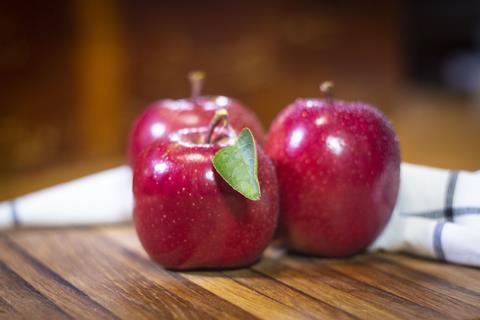Move represents a major step forward for the South African Gala mutation

Bigbucks, the wine-red Gala apple mutation discovered in South Africa, is entering a new chapter in its commercialisation after being granted plant breeders’ rights in Australia.
The variety was discovered by legendary South African apple expert Buks Nel in an orchard of Corder Galas in 2011. Since then, about 2.5m trees have been planted in South Africa, and the apple has received interest from growers across the world.
Anthony Rawbone-Viljoen, on whose estate in the Elgin district the mutation was discovered, described Bigbucks as “the improved Gala with the best colour potential”.
Together with Derek Corder, the founder of Corder Gala, Rawbone-Viljoen and Buks Nel formed Pink Vein, a company aimed at promoting Bigbucks and the Flash Gala brand, used for Bigbucks apples that adhere to strict quality specifications.
The brand has been registered in apple-consuming countries around the world. It is now one of the fastest growing apple varieties in South Africa and has has done extremely well in Asian markets.
“From our perspective, it is interesting that Australia is a market for domestically produced fruit, and the industry never fully focused on exports, so it is not a competitor to South African producers, making it a win-win situation,” Rawbone-Viljoen said.
After much deliberation, the South African owners crossed paths with Brendon Francis of Fruit Varieties International in Tasmania, and the long process of achieving plant breeders’ rights started. “Firstly, they had to get the plant material, plant it, and only then could authorities evaluate the fruit. The whole process took around five years,” explained Rawbone-Viljoen.
After a rigorous process of growing plant material and testing for viruses, Francis planted trees on different sites around Australia.
“Nurserymen were saying it stands head and shoulders above what they have in Australia. It is now over to them to promote the variety,” said Rawbone-Viljoen, who believes Bigbucks will eventually be produced commercially in New South Wales, Western Australia, Tasmania, and Southern Australia.
“Bigbucks can colour better than any other Gala, so it is just a question of them making the variety known to local growers through the nursery industry.”
Eventually, certain nurseries will be granted planting licenses, which will be conditional upon meeting certain quality parameters.
“We want growers to pursue the right way to do this by producing quality products matching the standard that we set for the variety from here.”
Bigbucks is known to offer first-grade pack-outs of around 80 per cent per bin. Some of the oldest orchards in South Africa are now about eight years old, and since full-bearing age, the best orchard has yielded over 150 tonnes per hectare, proving its potential as a winning option for growers.
“It is absolutely extraordinary and changes the paradigm of the variety compared to other planting options,” Rawbone-Viljoen said.






